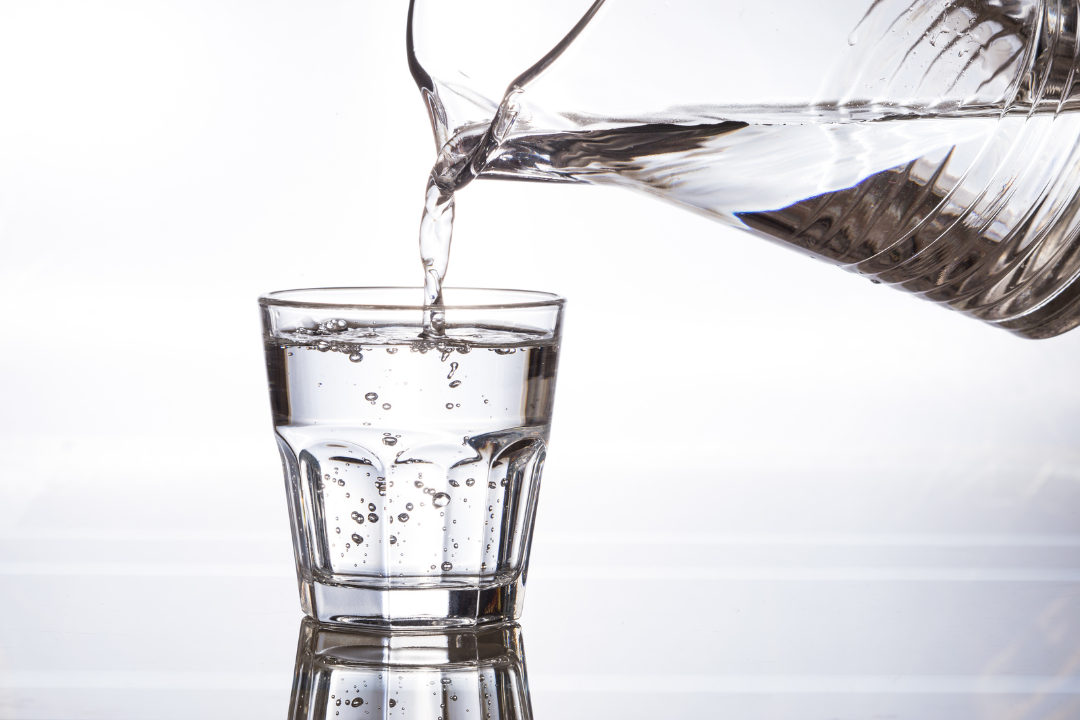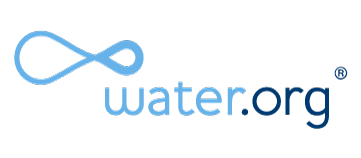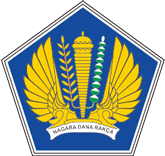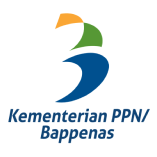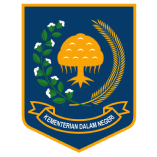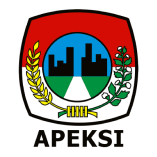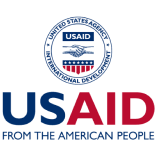Apa yang Bisa Kita Pelajari dari Penyediaan Air Minum di Norwegia?
2023-08-28 16:05:37 Dibaca : 711Available in English
27/B-NUWSP/Agustus/2023
Norwegia adalah salah satu dari 6 negara di dunia yang memiliki pengelolaan air terbaik (VOI, 2021). Tak hanya itu, Yonatan (2023) mengungkapkan bahwa Norwegia termasuk dalam 10 negara dengan kualitas air minum terbaik di dunia berdasarkan skor DALY-nya. Skor DALY (age-standardized disability-adjusted life-years lost per 100.000 population) menghitung berkurangnya tahun hidup per 100.000 populasi akibat kualitas air minum yang tidak memenuhi standar. Nilai 100 menggambarkan kualitas air yang jernih dan tidak terkontaminasi bakteri sama sekali. Sebaliknya, nilai 0 melambangkan kualitas air paling kotor. Indonesia dengan skor DALY sebesar 28,5% memiliki gap yang cukup jauh dengan Norwegia yang skor DALY-nya mencapai 100%. Baiknya kualitas air minum di Norwegia juga dapat dilihat dari data bahwa pada tahun 2022, sebanyak 99,3% penduduk Norwegia memiliki akses terhadap air minum aman dan higienis yang terbebas dari E. coli (Statistics Norway, 2023).

Gambar 1. Negara dengan kualitas air minum terbaik di dunia (World Population Review dalam Yonatan 2023)
Dari sederet data berikut, apa yang bisa kita pelajari dari Norwegia untuk perbaikan penyediaan air minum di Indonesia ke depannya? Mari simak ulasan berikut.
Pemeliharaan Kualitas Air
Norwegia merupakan negara yang kaya akan sumber air baku karena memiliki banyak sungai dan air terjun (Hongkong Environmental Protection Departement, 2007). Meskipun kualitas air secara umum baik, Norwegia pun menghadapi risiko pencemaran lokal. Untuk mengatasi hal tersebut, Norwegia memiliki peraturan yang ketat dan menerapkan proses filtrasi (penyaringan) menyeluruh untuk mengolah air limbah yang dihasilkan. Inilah cara Norwegia melindungi sumber air baku agar tidak terkontaminasi bahan kimia yang ditemukan dalam produk sehari-hari seperti deterjen, obat-obatan, dan cat (Winfield, 2023).
Selain itu, Norwegia melakukan pengawasan intensif pada sistem penyediaan air minum (SPAM) yang tersedia, salah satunya dengan memberlakukan sistem registrasi. Kebijakan ini mengharuskan pengelola untuk mendaftarkan SPAM yang memiliki kapasitas pelayanan lebih dari 50 orang ke pemerintah. Pada tahun 2016, SPAM yang terdaftar telah mencapai 1500 unit. Selain mendaftarkannya, pengelola juga berkewajiban untuk melaporkan data tahunan mereka. Hal ini memungkinkan pemerintah untuk mengumpulkan dan memantau data secara berkala sehingga kualitas air lebih terjaga (Steinberg dkk., 2017; UNECE, 2019).
Air minum yang didistribusikan di Norwegia juga rawan terhadap potensi kontaminasi logam seperti timbal atau tembaga karena pipa yang digunakan pada SPAM sudah tua (Winfield, 2023). Berdasarkan UNECE (2019), sebanyak 18% pipa dipasang sebelum tahun 1970 dan hampir 46% pipa dipasang pada periode antara 1970-2000. Pipa yang sudah tua rawan terhadap keretakan dan kebocoran yang dapat memengaruhi kualitas air pada sistem distribusi. Oleh sebab itu, Norwegia memberikan perhatian khusus pada perbaikan sistem distribusi melalui penggantian pipa-pipa tua. Data Statistics Norway menunjukkan bahwa pada tahun 2016, sekitar 3.800 titik perbaikan telah dilakukan (Steinberg dkk., 2017). Pada tahun 2022, proporsi jaringan perpipaan yang telah diganti yakni sekitar 0,63% dari seluruh pipa yang seharusnya diganti (Statistics Norway, 2023). Penggantian pipa pada SPAM bukan hanya melindungi air minum terhadap kontaminasi logam tetapi juga melindungi air minum terhadap kontaminasi limbah. Di Norwegia, pipa air minum umumnya terletak di saluran yang sama dengan pipa drainase, yang juga rawan mengalami kebocoran. maka terdapat risiko tinggi kontaminasi selama kebocoran atau perbaikan. Ketika tekanan pada pipa air minum turun, air drainase yang terkontaminasi limbah dapat tersedot ke dalam pipa air minum (Steinberg dkk., 2017). Oleh sebab itu, program penggantian pipa pada sistem distribusi air minum penting untuk dilakukan.

Gambar 2. Ilustrasi menuanya infrastruktur air minum dan air limbah yang berdampingan
Adaptasi Perubahan Iklim
Seperti yang kita ketahui, perubahan iklim memengaruhi ketersediaan air. Baca selengkapnya di sini. Tahun 2022 lalu, Norwegia khususnya Kota Oslo mengalami kekeringan selama setengah tahun. Saat itu, ketinggian air di Danau Maridal, sumber air minum utama di Kota Oslo, turun dari 88% pada kondisi normal menjadi 69%. Hal ini disebabkan oleh sedikitnya hujan yang turun, minimnya salju yang mencair, serta tidak berubahnya pola konsumsi air selama periode tersebut. Oleh sebab itu, pemerintah setempat meminta warganya melakukan efisiensi penggunaan air untuk mengantisipasi terbatasnya pasokan air (Sørensen, 2022).
Selain itu, Oslo Water and Wastewater Department pun menginisiasi proyek untuk beradaptasi terhadap perubahan iklim melalui The Midgard Snake. The Midgard Snake merupakan suatu terowongan berkapasitas 50.000 m3 yang memiliki berbagai fungsi. Bila curah hujan meningkat, terowongan ini dapat berfungsi sebagai sistem drainase yang dapat menurunkan risiko banjir. Ketika hujan berlebih, terowongan ini juga dapat mencegah meluasnya pencemaran air ke Fjord Oslo sehingga kualitas air di lokasi tersebut lebih terjaga. The Midgard Snake juga dapat berfungsi sebagai reservoir serta jalur transportasi (OECD, 2013).
Peningkatan Kapasitas Pengelola Air Minum
Menurut WHO (2011) dalam Hyllestad dkk. (2020), pemasok skala kecil sangat rentan terhadap kegagalan dalam menyediakan suplai air minum yang aman secara berkelanjutan. Di Norwegia, ketidakmampuan pemasok air skala kecil dalam menangani keadaan darurat telah menimbulkan kekhawatiran. Dari 1.500 pemasok air minum skala kecil yang diawasi oleh NFSA, kebanyakan dikelola oleh organisasi kecil dengan pelatihan dan kompetensi yang terbatas. Audit nasional Norwegia mengungkapkan bahwa 2/3 pemasok ini tidak menyiapkan aksi yang jelas dalam ketidakpastian menghadapi peristiwa besar. Padahal, setiap pemasok air perlu memiliki rencana yang jelas dalam menanggapi keadaan darurat. Oleh sebab itu, pada tahun 2017, layanan konsultasi 24 jam “National Water Guard (NWG)” (dalam bahasa Norwegia: Nasjonal vannvakt) diperkenalkan di Norwegia untuk mengatasi tantangan kurangnya kemampuan manajerial dalam penyediaan air minum. Pada program ini, pemasok air dapat berkonsultasi bersama para ahli dari Kementerian Layanan Kesehatan, Otoritas Keamanan Pangan Norwegia (NFSA), Asosiasi Air Norwegia, serta Institut Kesehatan Masyarakat Norwegia terhadap masalah yang dihadapinya (Hyllestad dkk., 2020).
Selama pelaksanaan program NWG dari 2017 hingga 2019, terdapat 50 aduan relevan yang berkaitan dengan penyediaan air minum. Sebanyak 49 dari 50 aduan ini berasal dari pemasok air minum skala kecil. Masalah-masalah penyediaan air minum yang dikonsultasikan beragam, mulai dari aspek kontaminasi mikrobiologi (72%), kontaminasi kimia (12%), hingga aspek teknis operasional (16%). Selain memfasilitasi pemasok air minum skala kecil dalam meningkatkan kapasitasnya, program ini juga membantu para pemangku kepentingan dalam menyiapkan panduan seputar penyediaan air minum (Hyllestad dkk., 2020).
Itulah beberapa hal yang dapat kita pelajari dari penyediaan air minum di Norwegia, baik dalam pemeliharaan kualitas air, adaptasi perubahan iklim, serta peningkatan kapasitas pengelola air minum. Semoga beberapa langkah tadi dapat diadaptasi oleh Indonesia untuk perbaikan penyediaan air minum ke depannya.
Sumber:
1. Hyllestad, S., Lund, V., Nygård, K., Aavitsland, P., dan Vold L. (2020): The establishment and first experiences of a crisis advisory service for water supplies in Norway, Journal of Water and Health, 18.4.
2. Hongkong Environmental Protection Department (2007): Review of the International Water Resources Management Policies and Actions and the Latest Practice in Their Environmental Evaluation and Strategic Environmental Assessment Final Report, diperoleh melalui situs internet: https://www.epd.gov.hk/epd/SEA/eng/file/water_index/norway.pdf.
3. OECD (2013): Water and Climate Change Adaptation, diperoleh melalui situs internet: https://www.oecd.org/env/resources/Norway.pdf.
4. Sørensen, Lasse (2022): Drought Has Oslo on Edge of Critical Water Shortage, diperoleh mealui situs internet: https://www.courthousenews.com/drought-has-oslo-on-edge-of-critical-water-shortage/.
5. Statistics Norway (2023): Municipal Water Supply, diperoleh melalui situs internet: https://www.ssb.no/en/natur-og-miljo/vann-og-avlop/statistikk/kommunal-vannforsyning.
6. Steinberg, dkk. (2017): Drinking Water in Norway, diperoleh melalui situs internet: https://www.fhi.no/en/he/hin/infectious-diseases/drinking-water-in-Norway/?term=.
7. UNECE (2019): Norway Protocol Report 4th Cycle, diperoleh melalui situs internet: https://unece.org/fileadmin/DAM/env/water/Protocol_reports/reports_pdf_web/2019_reports/Norway_Protocol_report_4th_cycle_23Apr19.pdf.
8. VOI (2021): Negara-negara dengan Pengelolaan Air Bersih Terbaik di Dunia, diperoleh melalui situs internet: https://voi.id/berita/40178/negara-negara-dengan-pengelolaan-air-bersih-terbaik-di-dunia.
9. Winfield, Scott (2023): 10 Countries with The Cleanest Water Ranked (Best and Worst), diperoleh melalui situs internet: https://waterdefense.org/water/tap/countries-with-the-cleanest-water/.
10. Yonatan, A.Z. (2023): 10 Negara dengan Kualitas Air Minum Terbaik di Dunia, diperoleh melalui situs internet: https://data.goodstats.id/statistic/agneszefanyayonatan/10-negara-dengan-kualitas-air-minum-terbaik-di-dunia-fYNGt.
Kredit Foto:
1. Andrey Bukreev dalam Canva Pro.
2. Ksenialotkova dalam 123RF.
Ditulis oleh:
Deviana Matudilifa Yusuf
What Can We Learn About Norway's Drinking Water Supply?
Norway is one of the top six countries in water management (VOI, 2021). Furthermore, Yonatan (2023) found that Norway is one of the ten countries with the best drinking water quality in the world based on its DALY score. The DALY score (age-standardized disability-adjusted life-years lost per 100,000 population) assesses the loss of years of life per 100,000 population owing to inadequate drinking water quality. A DALY score of 100 indicates that the water is clear and uncontaminated by any bacteria while a score of 0 signifies the most polluted water quality. Indonesia, with a DALY score of 28.5%, lags well behind Norway, which has a DALY score of 100%. The high quality of drinking water in Norway is further demonstrated by the fact that by 2022, 99.3% of the Norwegian population already have access to safe drinking water free of E. coli (Statistics Norway, 2023).

Figure 1. Countries with the best drinking water quality in the world (World Population Review in Yonatan, 2023)
What can we learn from Norway to enhance Indonesia’s drinking water supply in the future, based on the data shown above? Let's look at the following review.
Water Quality Protection
Norway has a lot of rivers and waterfalls, therefore it has a lot of raw water sources (Hongkong Environmental Protection Department, 2007). Although water quality in Norway is typically good, there is a possibility of local pollution. To address this, Norway has rigorous laws and a comprehensive filtering mechanism in place to handle the wastewater it generates. This is Norway's method of preventing the contamination of raw water sources from chemicals in daily products like detergents, medications, and paints (Winfield, 2023).
Furthermore, Norway is conducting intense monitoring of the existing drinking water supply system, including the implementation of a registration system. This regulation makes it mandatory for water supply systems with over 50 consumers to register new installations to the government. In 2016, waterworks registrations reached 1.500 units. Drinking water supply managers are also required to report their annual data in addition to registering it. This enables the government to gather and monitor data on a regular basis so that the water quality is protected (Steinberg et al., 2017; UNECE, 2019).
Due to the old pipes, drinking water in Norway is also susceptible to metal contamination, such as lead or copper (Winfield, 2023). According to UNECE (2019), 18% of water distribution pipes in Norway were installed prior to 1970 and nearly 46% of the pipes were installed between 1971 and 2000. Old pipes are susceptible to cracks and leaks, which can degrade the quality of water in the distribution system. Therefore, Norway puts more attention on enhancing the distribution system by replacing outdated pipes. Approximately 3.800 site repairs were performed in 2016, according to data from Statistics Norway (Steinberg et al., 2017). By 2022, approximately 0,63 percent of all pipes that should be replaced have been replaced (Statistics Norway, 2023). The pipe replacement not only protects drinking water from metal contamination, but also from wastewater contamination. In Norway, the drinking water pipeline usually lies in the same ditch as the drainage pipeline. Consequently, there is a significant risk of contamination during leakage and repairs. When the pressure in the drinking water pipeline falls, drainage water that is contaminated by sewage can be sucked into the drinking water pipeline. (Steinberg et al., 2017). Therefore, it is essential to implement a program for pipe replacement in the drinking water distribution system.

Figure 2. Illustration of deteriorated drinking water and drainage infrastructure
Climate Change Adaptation
Water availability is affected by climate change. Read further here. Norway, particularly Oslo, experienced a half-year drought in 2022. The water level in Lake Maridal, the primary source of drinking water for the city of Oslo, dropped from 88% under normal conditions to 69% at that time. This is due to the shortage of precipitation, the absence of snowmelt, and the unchanged pattern of water consumption during this time period. In anticipation of limited water supplies, Oslo municipality asks its citizens to use water efficiently (Srensen, 2022).
Oslo Water and Wastewater Department also started a project called The Midgard Snake to help the city adapt to climate change. The Midgard Snake is a 50.000 m3 tunnel that serves many different purposes. If it rains more, this tunnel will function as a drainage system, which can decrease the likelihood of floods. When it rains a lot, this tunnel will also prevent polluted water from reaching the Oslo Fjord so that the water quality in that area will be protected. The Midgard Snake can also be used as a transport route and a retention reservoir (OECD, 2013).
Capacity Building for Drinking Water Suppliers
WHO (2011) in Hyllestad et al. (2020) says that small-scale drinking water supplies have been identified as particularly vulnerable to failure in providing a continuous safe drinking water supply. The inability of water suppliers in Norway to manage water emergencies, particularly for small-scale systems, has raised concerns. Most of the 1.500 drinking water supply systems regulated and inspected by the government, are managed by small organizations with limited training and competence. Norway's national audit found that two-thirds of these suppliers did not have clear plans for emergency situation preparedness. In fact, it is mandatory for them to have it. So, in 2017, a 24-hour advisory service called “National Water Guard (NWG)” (in Norwegian: Nasjonal vannvakt) was introduced in Norway to address the challenges of inadequate managerial capability in water supplies. The program allows drinking water suppliers to discuss their issues with experts from the Ministry of Health and Care Services, the Norwegian Food Safety Authority, the Norwegian Water Association, and the Norwegian Institute of Public Health (Hyllestad et al., 2020).
During the program implementation from 2017 to 2019, NWG received 50 relevant requests. As many as 49 of these 50 requests originated from small-scale drinking water suppliers. Consulted drinking water supply issues included aspects of microbiological contamination (72%), chemical contamination (12%), and operational technical issues (16%). In addition to assisting small-scale drinking water suppliers in expanding their capacity, this program also enables stakeholders to obtain information for enriching drinking water supply guidelines (Hyllestad et al., 2020).
These are a few of the lessons we can learn from Norway's drinking water supply, both in terms of protecting water quality, adapting to climate change, and enhancing the managerial capacity of drinking water suppliers. Hopefully, Indonesia will be able to adopt some of these measures to enhance its drinking water supply in the future.
Sources:
1. Hyllestad, S., Lund, V., Nygård, K., Aavitsland, P., and Vold L. (2020): The establishment and first experiences of a crisis advisory service for water supplies in Norway, Journal of Water and Health, 18.4.
2. Hongkong Environmental Protection Department (2007): Review of the International Water Resources Management Policies and Actions and the Latest Practice in Their Environmental Evaluation and Strategic Environmental Assessment Final Report, obtained through the internet site: https://www.epd.gov.hk/epd/SEA/eng/file/water_index/norway.pdf.
3. OECD (2013): Water and Climate Change Adaptation, obtained through the internet site: https://www.oecd.org/env/resources/Norway.pdf.
4. Sørensen, Lasse (2022): Drought Has Oslo on Edge of Critical Water Shortage, obtained through the internet site: https://www.courthousenews.com/drought-has-oslo-on-edge-of-critical-water-shortage/.
5. Statistics Norway (2023): Municipal Water Supply, obtained through the internet site: https://www.ssb.no/en/natur-og-miljo/vann-og-avlop/statistikk/kommunal-vannforsyning.
6. Steinberg, et al. (2017): Drinking Water in Norway, obtained through the internet site: https://www.fhi.no/en/he/hin/infectious-diseases/drinking-water-in-Norway/?term=.
7. UNECE (2019): Norway Protocol Report 4th Cycle, obtained through the internet site: https://unece.org/fileadmin/DAM/env/water/Protocol_reports/reports_pdf_web/2019_reports/Norway_Protocol_report_4th_cycle_23Apr19.pdf.
8. VOI (2021): Negara-negara dengan Pengelolaan Air Bersih Terbaik di Dunia, obtained through the internet site: https://voi.id/berita/40178/negara-negara-dengan-pengelolaan-air-bersih-terbaik-di-dunia.
9. Winfield, Scott (2023): 10 Countries with The Cleanest Water Ranked (Best and Worst obtained through the internet site: https://waterdefense.org/water/tap/countries-with-the-cleanest-water/.
10. Yonatan, A.Z. (2023): 10 Negara dengan Kualitas Air Minum Terbaik di Dunia, obtained through the internet site: https://data.goodstats.id/statistic/agneszefanyayonatan/10-negara-dengan-kualitas-air-minum-terbaik-di-dunia-fYNGt.
Photo Credits:
Andrey Bukreev in Canva Pro.
Ksenialotkova in 123RF.
Written by:
Deviana Matudilifa Yusuf
Translated by:
Lely Lydia Rahmawati
#nuwsp #ditairminun #ciptakarya #watersupply
#airminum #drinkingwater #norwegia #norway #kualitasair #waterquality #perubahaniklim #climatechange #peningkatankapasitas #capacitybuilding
Share On :
